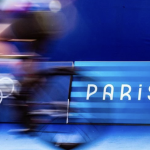Whether it’s a realistic scenario or just a pipe dream remains to be seen, but earlier this week World Triathlon sat down to discuss a bold idea: could the PTO’s T100 distance – 2km swim, 80km bike, 18km run – become part of the Olympic Games? The conversation took place during the ‘Hamburg Summit,’ held ahead of WTCS Hamburg, where stakeholders gathered to shape the future of triathlon.
During the summit, World Triathlon – alongside a range of partners and insiders – engaged in discussions about the direction of the sport and the development of its own brand. There was also a ‘dynamic panel discussion’ which touched on the potential for elevating the T100 format to Olympic status. Such a move would mark a dramatic shift from the current Olympic triathlon format of 1500m swim, 40km bike, and 10km run – nearly doubling the race duration.
The most obvious challenge? Broadcast time. The current Olympic distance was deliberately designed to be short, sharp, and spectator-friendly – ideal for modern viewing habits and network schedules. That’s also why the Mixed Team Relay, which is even shorter than the individual Olympic races, has become such a hit with audiences. Its rapid pace and format make it perfect for live TV and the limited attention span of today’s viewers.
That short attention span also appears to be at odds with the T100 series’ recent struggles. Despite optimistic messaging from the PTO, viewership numbers for T100 events have notably dropped this season compared to last year. Additionally, the PTO is having increasing difficulty securing live television coverage. Due to disappointing ratings, T100 races are being pushed behind paywalls or restricted to online-only streams – further limiting their visibility.
So while the T100 distance may be compelling for athletes and purists, its suitability for the Olympic stage raises big questions. For now, it remains an ambitious idea – one that would require not only a rethinking of triathlon’s Olympic identity but also a solution to the very real challenges of engaging a global broadcast audience for nearly twice the current race time.


